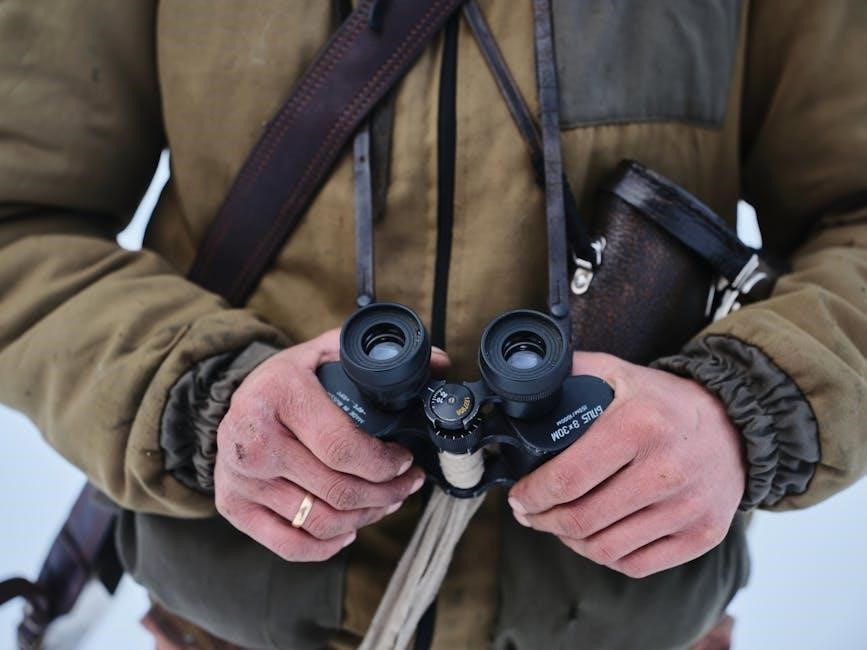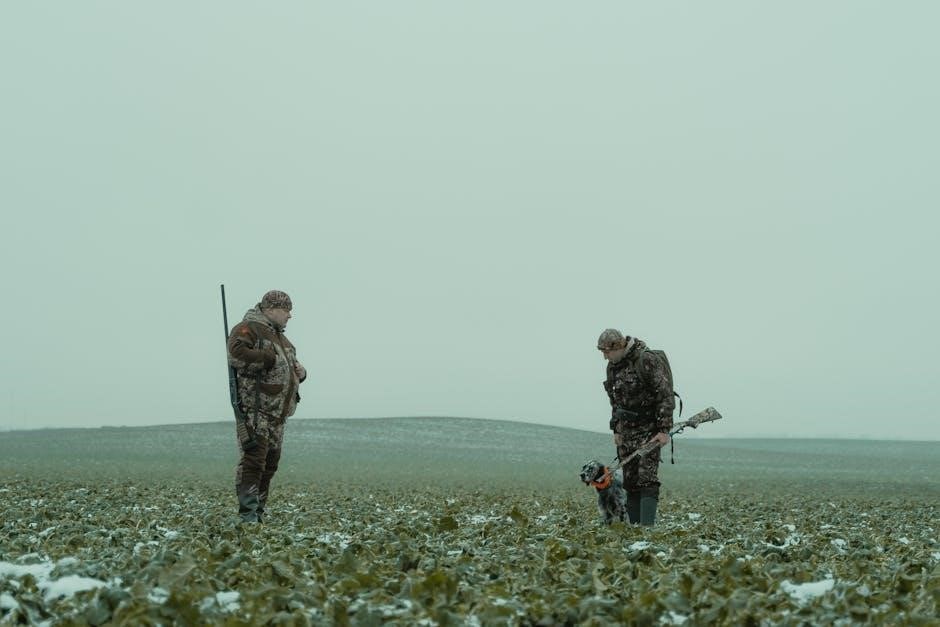The Hunter Node 100 is a cutting-edge, battery-operated irrigation controller designed for efficient water management. It features a user-friendly interface with push-button programming and an LCD display, offering flexible scheduling and manual operation options for precise control over irrigation systems. Perfect for both residential and small commercial applications, the Node 100 provides reliable performance with minimal power consumption, making it an ideal solution for modern irrigation needs.
1.1 Overview of the Hunter Node 100 Controller
The Hunter Node 100 is a battery-operated irrigation controller designed for precise water management. It features push-button programming, an LCD display, and manual operation capabilities. This controller is ideal for residential and small commercial applications, offering flexible scheduling options and water efficiency. With minimal power consumption, it operates reliably using one or two 9V batteries. The Node 100 supports single-station operation and is compatible with various sensors and accessories. Its user-friendly interface allows for easy setup and adjustments, making it a versatile solution for modern irrigation needs while ensuring optimal water usage.
1.2 Key Features of the Hunter Node 100
The Hunter Node 100 boasts a range of innovative features, including battery operation with one or two 9V batteries, manual mode for immediate station control, and push-button programming for easy customization. It also offers flexible scheduling options, compatibility with rain sensors, and an LCD display for clear user interaction. Designed for water efficiency, it supports single-station operation and integrates seamlessly with additional sensors and accessories. The controller’s compact design and reliable performance make it suitable for various irrigation setups, ensuring precise water management and ease of use for both residential and small-scale commercial applications.

Installation and Setup
Mount the Hunter Node 100 controller securely, ensuring proper wire connections and solenoid setup. Install the rain sensor up to 100 ft away using suitable wiring. Follow safety guidelines for reliable operation.
2.1 Mounting the Controller
Mounting the Hunter Node 100 controller requires careful planning to ensure optimal performance. Choose a location protected from direct sunlight, rain, and extreme temperatures. Use the provided mounting bracket to secure the controller to a wall or post, ensuring it is level and accessible for wiring. The controller should be positioned within 100 feet of the solenoid and rain sensor for proper connectivity. Avoid areas with standing water or high humidity to prevent damage. Once mounted, ensure all wires are securely connected and tightened to maintain reliable operation. Proper installation ensures the controller functions efficiently and remains durable over time.
2.2 Connecting the Solenoid and Wiring
Connecting the solenoid and wiring to the Hunter Node 100 is straightforward but requires attention to detail. Locate the solenoid near the irrigation valve and connect its wires to the controller. Use 18 AWG or larger wire for reliable connections. Attach the common wire to the COM terminal and the valve wire to the corresponding station terminal (e.g., STA1). Ensure all connections are secure and waterproof to prevent corrosion. Avoid over-tightening, which could damage the terminals. After wiring, test the system to confirm the solenoid activates correctly. Proper wiring ensures efficient and reliable operation of your irrigation system.
2.3 Installing the Rain Sensor
Installing the rain sensor for the Hunter Node 100 ensures efficient water conservation by automatically pausing irrigation during rainfall. Mount the sensor in an open area, such as a roof or fence, up to 100 feet from the controller using 18 AWG wire. Position it level and exposed to the sky to accurately measure rainfall. Connect one end of the wire to the sensor and the other to the RS terminal on the controller. Secure all connections with waterproof seals to protect against moisture. Test the sensor by simulating rain to confirm proper operation and system response.

Programming the Hunter Node 100
The Hunter Node 100 is a battery-operated controller with push-button programming and an LCD display for easy navigation. It supports single or multiple station setups and features manual mode for quick access to irrigation zones.
3.1 Entering Manual Mode
To enter manual mode on the Hunter Node 100, press and hold the right arrow button until “Manual” appears on the LCD display. This allows you to run individual stations or all zones sequentially. Use the left and right arrows to select the desired station, then press the button once to activate it. The LCD will show the station number and run time; For immediate operation, press and hold the button again to start watering. Manual mode is ideal for testing or flushing stations without altering programmed schedules. The controller returns to standby mode after manual operation is complete.
3.2 Setting Up Watering Programs
Setting up watering programs on the Hunter Node 100 is straightforward. Use the push-button interface to create custom schedules. Press the button to access the menu, then use the left and right arrows to navigate to the “Program” section. Select the desired program number and set the start time, interval, and duration for each station. Choose between daily, odd, or even day watering, and customize run times for each zone. The controller allows up to four independent programs, providing flexibility for varying irrigation needs. Once configured, the Node 100 will automatically execute the programmed watering schedules, ensuring efficient and consistent water distribution. This feature enhances water efficiency and simplifies lawn care management.
3.4 Advanced Programming Options
The Hunter Node 100 offers advanced programming options for tailored irrigation control. Users can customize watering zones, set multiple start times, and adjust intervals based on soil type and plant needs. The controller supports weather sensor integration, enabling automatic adjustments for rain, wind, and temperature variations. Advanced features also include seasonal adjustments, allowing users to modify watering durations based on changing conditions. Additionally, the Node 100 allows for manual overrides and priority watering for specific zones. These advanced settings ensure precise water management, optimizing efficiency and reducing waste, while maintaining a user-friendly interface for seamless adjustments and monitoring. Battery life is also optimized.

Manual Operation

The Hunter Node 100 allows manual operation for immediate control over irrigation stations. Access manual mode to run individual zones on demand, ensuring precise watering management.
4.1 Running Stations Manually
To manually operate the Hunter Node 100, enter manual mode by holding the right arrow button. Use the up and down arrows to select the desired station. Press the right arrow again to start manual operation. The LCD will display the selected station number and run time. Manual mode allows immediate control over individual zones, enabling quick adjustments or testing. The system will run the selected station for up to 10 minutes unless stopped. This feature is ideal for troubleshooting or performing quick water checks without altering programmed schedules.
4.2 Testing and Flushing Stations
Testing and flushing stations on the Hunter Node 100 ensures proper irrigation system functionality. Enter manual mode by holding the right arrow button. Select each station using the up and down arrows and activate it to check for proper water flow. Inspect each zone for full coverage, low pressure, or blockages. Run each station individually to flush debris from the lines, ensuring clean water distribution. This process helps maintain system efficiency and prevents clogs. Regular testing and flushing are essential for optimal performance and longevity of the irrigation system.

Maintenance and Troubleshooting
Regular maintenance ensures optimal performance. Replace batteries annually, clean the controller, and check wire connections. Troubleshoot issues like faulty solenoids or sensor malfunctions promptly for reliable operation.
5.1 Battery Replacement and Care
The Hunter Node 100 operates on one or two 9V alkaline batteries, ensuring reliable performance. Replace batteries annually or when the battery icon appears on the LCD. Use high-quality alkaline batteries for optimal life.

Avoid exposing batteries to extreme temperatures. Clean battery contacts periodically to maintain proper connections. For extended use, consider an optional memory-saving battery to preserve settings during replacement. Proper care ensures uninterrupted irrigation control and system efficiency.
5.2 Common Issues and Solutions
Common issues with the Hunter Node 100 include station failure, incorrect watering times, or unresponsive buttons. For station failure, check wiring connections and ensure solenoids are properly attached. If the controller isn’t following schedules, verify program settings and battery levels. Unresponsive buttons may require resetting the controller by removing batteries for 10 seconds. Additionally, ensure the rain sensor is clean and free of debris for accurate moisture readings. Regularly inspect and clean the LCD screen for visibility. For persistent issues, refer to the user manual or contact Hunter support for assistance.

Advanced Settings and Customization
The Hunter Node 100 offers customizable settings for tailored irrigation control, including advanced weather sensor integration and smart features for optimized water usage and system efficiency.
6.1 Adjusting Controller Settings
The Hunter Node 100 allows users to fine-tune controller settings for optimal performance. Using the push-button interface, you can adjust watering durations, start times, and station sequences. The LCD display provides clear feedback, enabling easy navigation through menus. Advanced features include customizing water budgets and setting rain delay periods. For precise control, users can modify sensor sensitivity and irrigation frequency based on weather conditions. These adjustments ensure efficient water usage while maintaining healthy landscaping. The controller also supports manual overrides, allowing quick changes to schedules without altering programmed settings. This flexibility makes the Node 100 adaptable to varying environmental and operational needs.
6.2 Using Weather Sensors and Smart Features
The Hunter Node 100 supports integration with weather sensors to optimize irrigation schedules based on real-time conditions. By connecting a rain or soil moisture sensor, the controller can automatically adjust watering cycles, preventing overwatering during rain or high moisture levels. Smart features also enable remote monitoring and control via compatible systems, allowing users to make adjustments from a smartphone or computer. Weather-based adjustments ensure water is used efficiently, reducing waste and promoting healthier plants. These advanced capabilities make the Node 100 a versatile and eco-friendly solution for modern irrigation management.

Compatibility and Integration
The Hunter Node 100 is compatible with various sensors and irrigation systems, allowing seamless integration for enhanced functionality. It supports rain and soil moisture sensors, ensuring optimal water usage. The controller can also connect with other irrigation components, providing a flexible and efficient system. Its compatibility with 18 AWG wires ensures reliable connections. This adaptability makes the Node 100 a versatile solution for modern irrigation needs, promoting water efficiency and system flexibility.
7.1 Compatible Sensors and Accessories
The Hunter Node 100 is compatible with a range of sensors and accessories to enhance its functionality. It supports rain sensors, which can be mounted up to 100 feet away using 18 AWG wires, ensuring reliable connections. Additionally, it works with weather sensors, including wind speed, rainfall, and temperature sensors, allowing for smart, weather-based irrigation decisions. The controller is also compatible with Hunter’s range of solenoids and can integrate with other irrigation components. This versatility enables users to customize their irrigation system for optimal performance and water efficiency, making the Node 100 a flexible and scalable solution for various irrigation needs.
7.2 Integration with Other Irrigation Systems
The Hunter Node 100 can seamlessly integrate with other irrigation systems and components, enhancing its functionality and adaptability. It is compatible with central control systems, allowing for centralized management of larger irrigation networks. The controller can also connect to pump start relays, enabling it to control irrigation pumps efficiently. Additionally, it works with two-wire systems, making it easy to expand or integrate with existing setups. This versatility ensures the Node 100 can be incorporated into a wide range of irrigation configurations, providing scalable and reliable performance for both residential and commercial applications while maintaining its user-friendly and efficient operation.

Best Practices for Usage
Regularly inspect wiring and connections to ensure proper operation. Replace batteries timely and use high-quality replacements. Adjust programs seasonally to match water needs and weather conditions. Optimize watering schedules for water efficiency and system performance. Always refer to the manual for specific guidelines and recommendations to maintain optimal functionality and longevity of the Hunter Node 100 irrigation controller.
8.1 Water Efficiency Tips
To maximize water efficiency with the Hunter Node 100, use manual mode for immediate adjustments and ensure proper battery replacement for consistent operation. Regularly inspect and clean sensors to maintain accuracy. Adjust watering schedules seasonally to align with weather conditions and plant needs. Utilize the rain sensor to prevent overwatering during rainfall. Check for leaks and ensure proper nozzle installation to avoid water waste. Program shorter, more frequent watering sessions to reduce runoff. Use the advanced programming features to customize zones and optimize water usage. Schedule seasonal adjustments to match plant growth cycles and local weather patterns for optimal efficiency.
8.2 Seasonal Adjustments for Optimal Performance
Adjust watering schedules seasonally to match weather conditions and plant needs. Increase watering frequency during hot summer months and reduce it in cooler seasons. Use the rain sensor to automatically pause irrigation during rainfall. For winterization, drain the system and protect the controller from freezing temperatures. In spring, restart the system and check for any damage or leaks. Program shorter cycles in fall as plants require less water. Regularly update the controller’s settings to reflect seasonal changes, ensuring efficient water use and system performance. Customizing zones for specific seasonal needs enhances overall irrigation efficiency and plant health throughout the year.
The Hunter Node 100 offers efficient, user-friendly irrigation control. For further assistance, refer to the official Hunter Industries website or consult the provided user manual for detailed guidance.
9.1 Summary of Key Features and Benefits
The Hunter Node 100 is a battery-operated irrigation controller offering push-button programming, an LCD display, and multiple program options. It supports manual operation and is compatible with rain sensors, ensuring water efficiency. Designed for residential and small commercial use, it provides reliable performance with low power consumption. Key benefits include easy installation, flexible scheduling, and durable construction. The controller’s user-friendly interface simplifies programming and manual overrides, making it ideal for modern irrigation needs while promoting water conservation.
9.2 Where to Find Additional Support and Manuals
For comprehensive support and detailed instructions, visit the official Hunter Industries website. The Hunter Node 100 Controller manual is available online as a downloadable PDF, providing in-depth guidance on installation, programming, and troubleshooting. Additional resources include user guides for compatible sensors and accessories. The manual covers topics like battery replacement, manual mode operation, and advanced settings. Specific documents, such as the NODE-100 Controller Manual (88 pages) and the NODE-X00 Installation Guide (1 page), offer detailed insights. These resources ensure optimal performance and customization of the Hunter Node 100 irrigation system.
